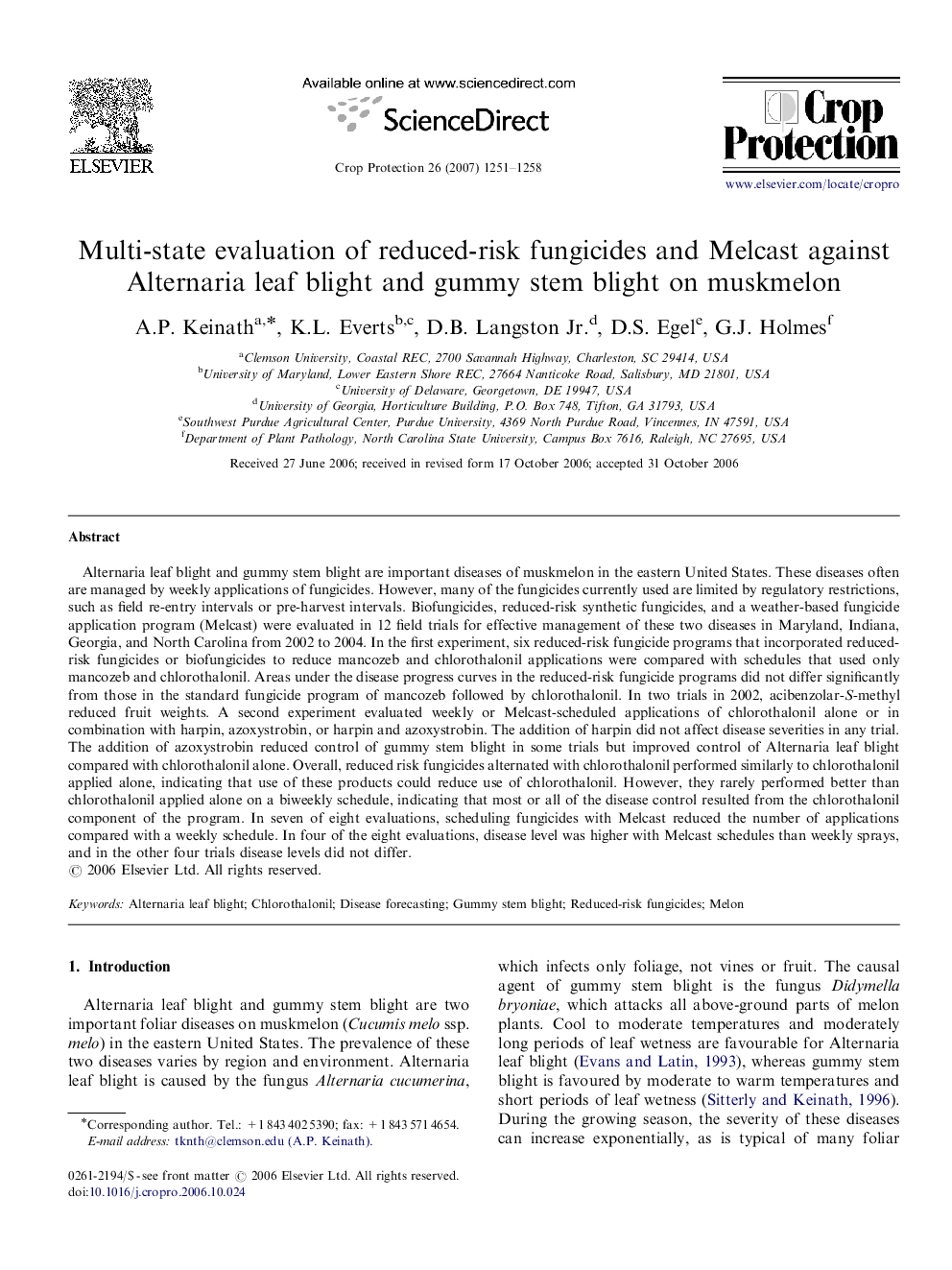| کد مقاله | کد نشریه | سال انتشار | مقاله انگلیسی | نسخه تمام متن |
|---|---|---|---|---|
| 4507963 | 1321396 | 2007 | 8 صفحه PDF | دانلود رایگان |

Alternaria leaf blight and gummy stem blight are important diseases of muskmelon in the eastern United States. These diseases often are managed by weekly applications of fungicides. However, many of the fungicides currently used are limited by regulatory restrictions, such as field re-entry intervals or pre-harvest intervals. Biofungicides, reduced-risk synthetic fungicides, and a weather-based fungicide application program (Melcast) were evaluated in 12 field trials for effective management of these two diseases in Maryland, Indiana, Georgia, and North Carolina from 2002 to 2004. In the first experiment, six reduced-risk fungicide programs that incorporated reduced-risk fungicides or biofungicides to reduce mancozeb and chlorothalonil applications were compared with schedules that used only mancozeb and chlorothalonil. Areas under the disease progress curves in the reduced-risk fungicide programs did not differ significantly from those in the standard fungicide program of mancozeb followed by chlorothalonil. In two trials in 2002, acibenzolar-S-methyl reduced fruit weights. A second experiment evaluated weekly or Melcast-scheduled applications of chlorothalonil alone or in combination with harpin, azoxystrobin, or harpin and azoxystrobin. The addition of harpin did not affect disease severities in any trial. The addition of azoxystrobin reduced control of gummy stem blight in some trials but improved control of Alternaria leaf blight compared with chlorothalonil alone. Overall, reduced risk fungicides alternated with chlorothalonil performed similarly to chlorothalonil applied alone, indicating that use of these products could reduce use of chlorothalonil. However, they rarely performed better than chlorothalonil applied alone on a biweekly schedule, indicating that most or all of the disease control resulted from the chlorothalonil component of the program. In seven of eight evaluations, scheduling fungicides with Melcast reduced the number of applications compared with a weekly schedule. In four of the eight evaluations, disease level was higher with Melcast schedules than weekly sprays, and in the other four trials disease levels did not differ.
Journal: Crop Protection - Volume 26, Issue 8, August 2007, Pages 1251–1258